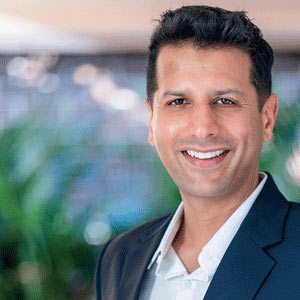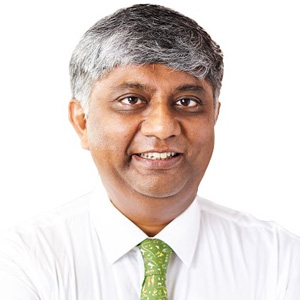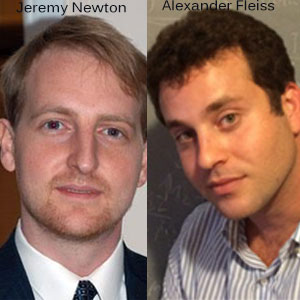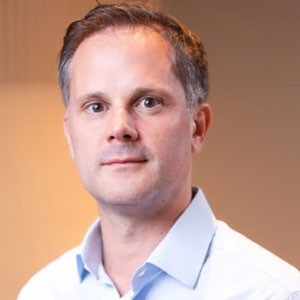THANK YOU FOR SUBSCRIBING

Combating IoT Challenges with Smart Choices
Sandeep Babbar, Head Of Technology Innovation, Gwa Group Limited


Sandeep Babbar, Head Of Technology Innovation, Gwa Group Limited
The IoT technology is helping organisations create aware and autonomous products that address certain customer pain points. Connected devices (IoT) are pushing the frontier of digital transformation; new business models have thrived from the interconnected nature of the products. Some organisations have added recurring revenue plans based on the consumption model or built services on the collected data. However, while the demand for IoT-powered products is increasing dramatically, we also notice that an overwhelming majority of organisations are failing to commercialise or live past the initial hype cycle of their products. There are several reasons why a majority of IoT business models can't withstand the test of time, and these reasons are based on my experience in building and launching several IoT products in different industries.
The consumerisation of technology has created a big marketplace for IoUT (internet of useless things); traditional products combined with god-like technology that doesn't solve real-world problems. But, in some cases, they do help with the psychological need of the consumer to signal excellence or superiority, and they become vanity products for consumers, for e.g., Smart bikes, smart shoes, and smart toasters. Technologists' biggest mistake is assuming that technology features will become product benefits. A clear symptom of decay is when the product team leads with technology, not from the business value. Identifying benefits from new technology is not always easy, and this is where the "So what? test" comes in handy; the brutal and repeated use of "so what" to identify the correct value proposition of the products within an organisation will make sure investments are made for the right consumer benefits, as it will help your organisations ensure that they are not creating another IoUT or a worthless wonder.
Connected consumer and commercial products are expensive, with layers of hardware, firmware, software applications, cloud operations, and connectivity fabric garnished with a layer of cyber security. The more complex your technology stack becomes, the more tightly it will embrace the original problem you are trying to solve. Technology exists to make life simple; complexity in technology opposes its purpose for existence. Smart-connected products cost 5-10x the costs of non-connected traditional products. Technology is a very expensive spice for your products; please think before you season your new products with technology. The total cost of ownership for a connected product becomes a big factor in the failure to launch.
This happens because organisations severely underestimate the complex capability required to operate and support the components, services, technologies and processes.
Organisations producing high-cost, low-value connected products are highly invested in complex technology stacks, and at some point, technology takes on the new goal of preserving the original problem to preserve its existence and the ecosystem of people working on it. For example, I have witnessed some organisations investing in large data science teams to find nuggets of insights from the data even before their IoT products have completely solved the primary customer need; this is a recipe for disaster. Some technology teams remind me of the ancient Egyptians; Egyptian kings were buried in simple brick structures that gradually became more elaborate. They eventually became the pyramids, and financing these "monsters of pride" created unbearable stress that destroyed the Egyptian empire. But unfortunately, organisations producing many connected products are building these technology "monsters of pride". Detailed cost analysis and cloud computing consumption models for all services must be incorporated into the product design process. Analyse what parts each unit of your product will need and how much it will cost to meet the manufacturing needs. Ascertain if the production process will incur additional costs, such as skilled labour or third-party production resources. The installation and integration of commercial IoT solutions are complex, and the cost of commissioning the product is usually not factored into the product design process and is usually pushed to the customer end.
The product-centric mindset needs to evolve if your organisation plans to launch connected products. the services you build on top of your connected products will become a key differentiator and give you a competitive edge
For consumer and commercial connected products, timing is everything; a lot of well-conceived, high-quality IoT products failed because they were launched at the wrong time. IoT products take over two years to launch, and consumer expectations and the technology landscape can change dramatically in that period. Therefore, your product design and marketing should withstand market fluctuations. Speed to market plays a significant role in commercialising IoT products, so run your product team as a venture capitalist and run it as a venture with a laser focus on generating revenue quickly.
The product-centric mindset needs to evolve if your organisation plans to launch connected products. The services you build on top of your connected products will become a key differentiator and give you a competitive edge. It is hard for a traditional product-centric organisation to transform into a services and solutions organisation, and many organisations avoid that route. This change involves changing the identity from being a product provider to an "experience provider". Services built on the data generated from the product will help your organisation map your journey through the new emerging market along with the traditional product market. When products become ingredients in a connected experience, the service attributes dominate the popularity. A fatal mistake that organisations make in their service architecture is when they build a service on top of low-value data, which makes their service offering even weaker. The revenue models for your connected products will undergo many changes at the beginning, which is quite normal for organisations.
We often confuse invention and innovation; innovation is an organisation's ability to successfully commercialise a product or service at a scale that has never been done before. The IoT product failures are largely happening due to an organisation's inability to innovate or commercialise the correct ideas or technology stacks.
Weekly Brief
I agree We use cookies on this website to enhance your user experience. By clicking any link on this page you are giving your consent for us to set cookies. More info
Read Also
New Hr Capabilities To Face Evolving Technologies
Strengthening The Compliance Fortress In The Banking Sector
Navigating Legal Challenges By Adapting To Technological Shifts
Compliance In The Medtech Industry
How Can The American Trade Finance Companies Manage Present (And Future?) Chinese Mineral Export Control Measures?
Optimizing Customer Experiences Through Data-Driven Strategies
Customer-Oriented And Compliance Mindsets In Claims Management
Optimizing Business Efficiency with a Multi-Disciplinary Legal Operations Team





















